5 Ways to Explore Istria Off the Beaten Path
March 12th, 2022 - There’s so much more to Istria beyond the famous Rovinj landscape or the olive oil and truffle fame. The region is full of treasures to discover, and we're happy to help you plan your visit with five unique ideas for things to do in Istria
And then go ahead and have those truffles anyway - we’d never think to suggest otherwise.
Walk the Parenzana trail
Not necessarily the whole thing, of course: running through three countries, the Parenzana trail is 123 kilometres long in total, and it's perfectly fine to only walk or cycle a part of it. Historically, Parenzana was known as the narrow-gauge railway which connected the Italian port city of Trieste with Poreč in Istria, passing through many inland villages and smaller towns along the way.
Fun fact: as the inauguration of the Parenzana line in Trieste was delayed several times due to various issues, the locals got skeptical after a while. When the first train ceremonially arrived in Trieste on April 1st, 1902, almost no one showed up at the railway station because people were convinced the announcement was an April Fools’ joke.
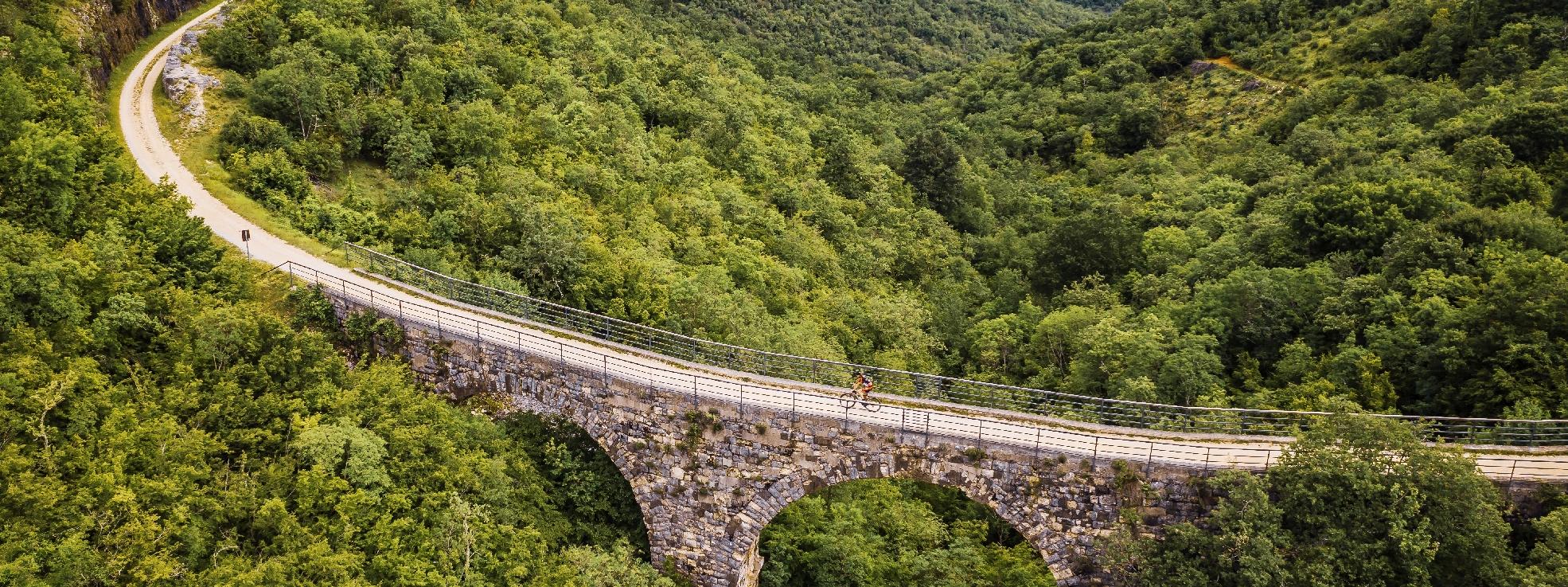 Parenzana trail / parenzana.net
Parenzana trail / parenzana.net
But it wasn’t, and the railway soon made it possible for agricultural produce to be distributed all over the region, stimulating Istria’s economic progress and becoming somewhat of a lifeline for the local population. Although the railway line ceased operation in 1935, it certainly left a mark on the region, and so it was decided to revive the route as a hiking and cycling trail.
Parenzana will take you over bridges and viaducts, now secured by guard rails; it runs through well-lit tunnels and snakes through the lush landscape. The entire trail is well-marked and is split into shorter routes - a comprehensive guide is available on parenzana.net, in several languages.
Ride the zipline over the Pazin abyss
Although Pula is the biggest town in Istria, the county’s administrative seat is actually Pazin, a town located in the very centre of the region.
Pazin boasts a medieval castle that was once a residence of Istrian margraves and hasn’t lost any of its grandeur with time. Perched on top of a tall cliff plummeting into the Pazin abyss, the castle dominates the majestic landscape which inspired literary giants of the likes of Dante Alighieri and Jules Verne.
 Pazin / Central Istria Tourist Board, photo by Julien Duval
Pazin / Central Istria Tourist Board, photo by Julien Duval
And what better way to take in the impressive sights than flying over the natural attraction? The Pazin zipline runs over the abyss in two stages: the first cable is 220m long and the second 280m, giving adrenaline lovers plenty of time to admire the historic landscape, as well as the karst phenomenon down below.
The zipline operates regularly from May 1st, but can be visited in the off-season as well upon request, provided you’re visiting with a group - contact info is available on their Facebook page.
Hike the contraband trails of Učka mountain
Have you ever had a chance to retrace the steps of smugglers of the past? A few years ago, three unique hiking trails were established on the Učka mountain, the natural border between Kvarner and Istria, introducing hikers to the history of contraband activity in the area.
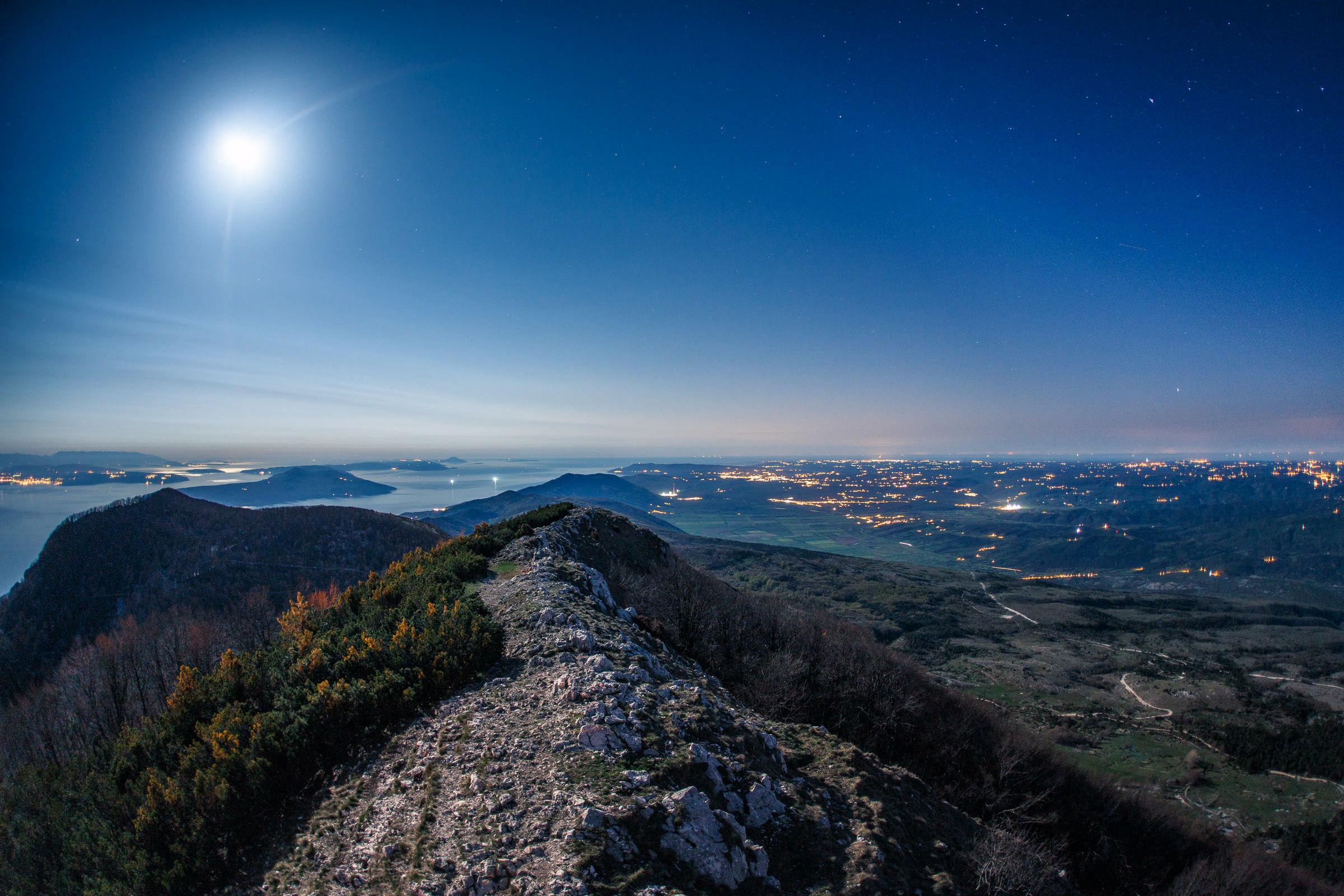 Učka mountain © Mario Romulić
Učka mountain © Mario Romulić
In the 1930s, a duty-free zone was established on the coastline around Rijeka to stimulate tourism and the local economy. Overnight, consumer goods became much cheaper, and the struggling population soon started to smuggle products such as sugar and petroleum out of the duty-free zone and over the Učka mountain on foot. They sold the goods for profit in the rest of the region as a way to survive in times of scarcity - check out this TCN feature for the full story.
You can find detailed information about the hiking routes in a dedicated mobile app, along with a list of accommodation providers and restaurants in the area. It’s available to download on GooglePlay and AppStore - search for 'Kontraband thematic trails'.
Discover the history of mining in Raša
Istria has a long history of coal mining, specifically in the area around Labin town located off the eastern coast of the peninsula. Arguably the most unique place in the mining landscape is Raša, known as Istria's youngest town which was purposefully built in the 1930s to house miners and their families.
 Raša town / Raša Tourist Board
Raša town / Raša Tourist Board
Two pairs of streets lined with former miners’ houses meet at the central square in Raša, crowned with a church built in the shape of an overturned mining cart and dedicated to the patron saint of miners, St Barbara.
Even though the mines closed a long time ago, you can experience what it was like to spend your days in the dark underworld. Located on the main square in Raša, the Miners House Arsia tells the story of Istrian miners and provides insight into their lives both above and below ground.
 Miners' House Arsia / Raša Tourist Board
Miners' House Arsia / Raša Tourist Board
Starting from the entrance built like a mining shaft, the museum evokes the atmosphere of a mine - you can walk on the original railroad tracks surrounded by the sounds of coal digging and distant explosions, watch archival films to learn the stories of real miners who once inhabited the town, but also step into their homes thanks to a perfect recreation of a typical miner’s apartment.
Learn more about the Miners’ House over at the Raša Tourist Board.
Visit Croatia’s oldest lighthouse in Savudrija
The Adriatic coast is dotted with numerous historic lighthouses, most of them built in the 19th century. The one in Savudrija, the northwestern tip of Istria, boasts two champion titles: it’s the oldest active lighthouse in Croatia, and the world’s first lighthouse powered by coal gas.
 Savudrija lighthouse © Mario Romulić
Savudrija lighthouse © Mario Romulić
The lighthouse was built of white Istrian stone and powered by coal shipped in from the Labin mines. It was inaugurated in 1818 and became a local sensation overnight: people were so fascinated by the new structure, the lighthouse keepers were soon granted a licence to bear arms and were instructed to shoot any enthusiasts who attempted to scale the building and climb to the top.
 Savudrija © Mario Romulić
Savudrija © Mario Romulić
Nowadays fully automated and monitored by a single keeper, the lighthouse isn’t that much of a novelty anymore, but is still a beautiful landmark and in itself a good enough reason to visit Savudrija. Let it also be known that the place boasts a pretty spectacular coastline, lined with pines and traditional fishermen's boats. The waters around Cape Savudrija are favoured by surfers and divers alike.
Fishermen in Istria Struggling With Jellyfish Infestation
February 20th, 2022 - The barrel jellyfish is mostly harmless to humans, but sure seems to be a menace to fishing nets due to its size - and numbers. Fishermen have been struggling with an invasion of huge jellyfish in the north of Istria that shows no sign of subsiding
An infestation of large jellyfish has been a source of headache for fishermen in Umag and Savudrija for two months now, so much so that some have given up and are not even going out to sea anymore. There are so many of them, and they’re so big and heavy that they destroy the nets as the fishermen lift them out of the sea, reports Jutarnji list.
Danilo Latin, a fisherman from Savudrija, says it’s not uncommon for them to pull out one ton of jellyfish at a time. He’s never seen such a thing before, and fishermen in general don’t know how to go about it.
‘This has been going on for two months. It’s never been this way. Last year, [the jellyfish] appeared for a short while in March and that was that. This year they just won’t leave, and we don’t know when we’ll be able to go out to sea again. There are so many of them that even us fishermen are starting to feel uneasy. A friend of mine was recently at sea and told me that he’s never been scared to look at the sea before. He had a feeling as if it were ghosts under the surface’, said Latin.
Latin and other fishermen who are dealing with the jellyfish invasion in northern Istria are calling for the situation to be declared a natural disaster.
‘We can’t go out to sea as we only suffer damage. Some of the jellyfish weigh up to eight kilograms. And we don’t even know when we’ll be able to sail out. We informed experts at the Institute of Agriculture and Tourism in Poreč of this, and invited the Ruđer Bošković Centre for Marine Research in Rovinj as we wish for this to be declared a natural disaster. As far as I know, the scientists from the Rovinj institute haven’t yet arrived to see what’s going on. We reached out to the Department of Agriculture of Istria County and they told us they had never dealt with this issue. It’s new to everyone’, Latin said, adding it wasn’t only an issue in Umag and Savudrija, but also in the waters of Slovenia and the Italian region Friuli Venezia Giulia.
Scientist Barbara Sladonja from the Centre for Invasive Species of the Institute of Agriculture and Tourism in Poreč wasn’t able to say with certainty when the jellyfish would pull back and if it would happen before summer.
‘It’s the barrel jellyfish (Lat. Rhizostoma pulmo). This jellyfish is naturally found in our waters, and over the last hundred years or so, it has made an occasional appearance in large numbers. It’s the so-called jellyfish bloom phenomenon, seen in many jellyfish species, including the barrel jellyfish. In recent years, such blooms have been lasting longer and longer. It can’t be said for sure when it will pull back. Judging by the last few years, they already should have retreated, but their population remains large. We hope this won’t last until summer’, said the scientist.
She explained there were several reasons why the jellyfish would appear in such large numbers.
‘One reason is the sea temperature being too high. The barrel jellyfish population should decrease significantly in winter due to low temperatures. This year, it apparently hasn’t dropped low enough, and the population kept growing. In addition, marine food chains have been disrupted by several factors’, said Sladonja.
Experts from the Ruđer Bošković Institute from Rovinj said they were monitoring the phenomenon and that this jellyfish species is among the bigger ones found in the Adriatic. They can weigh up to 10 kilos each.
Until they fall back, it’s only the Ministry of the Sea that can help the fishermen. According to Ezio Pinzan, head of Istria’s Department of Agriculture, Istria County doesn’t have the funds for it.
‘We have to see what’s going on and how to prevent it from happening again next year. The Ministry has an aid package of 50 million kuna in the works, which they’ll distribute to our fishermen for this difficult situation’, said Pinzan.
Derelict Estate in Istria to Transform into Luxury Resort and Golf Course
February 12th, 2022 - Stancija Grande near Stara Savudrija, one of Istria’s most beautiful historical residential objects, is about to be renovated and developed into a luxury tourist destination
Namely, the estate in north-western Istria is to be transformed into an exclusive tourist resort and golf course, as envisioned in the project launched back in 2006. As reported by Glas Istre, the investment is worth between 80 and 90 million euro, and is split between two companies, Golf Stancija d.o.o. and Golf Hotel Savudrija d.o.o. so that the project could be more easily managed.
The estate spans over some 70 hectares, where the investors plan to build an 18-hole golf course, a five star hotel with a capacity of 200 beds, and catering facilities. The crown jewel of the estate, the 19th-century palace designed in a neoclassical style and also known as Villa Cesare, will house the most luxurious accommodation units within the resort.
The project is headed by the same management team that successfully implemented the Skipper project, the construction of Hotel Kempinski and of the golf course in Savudrija (Crveni Vrh).
‘The business plan that was conceived, financed and launched by the company Pelagius d.o.o. in 2006 was scrapped a few years ago for objective reasons, and we are now starting from scratch. It’s important to point out that this project has nothing to do with mass-construction of apartments on the coast, and is subject to supervision of authorities that care for historical and cultural heritage’, said Ljubica Marfan, member of the board of Golf Stancija d.o.o.
Stancija Grande was taken over by the military during World War II, and has been left to ruin since the 80s.
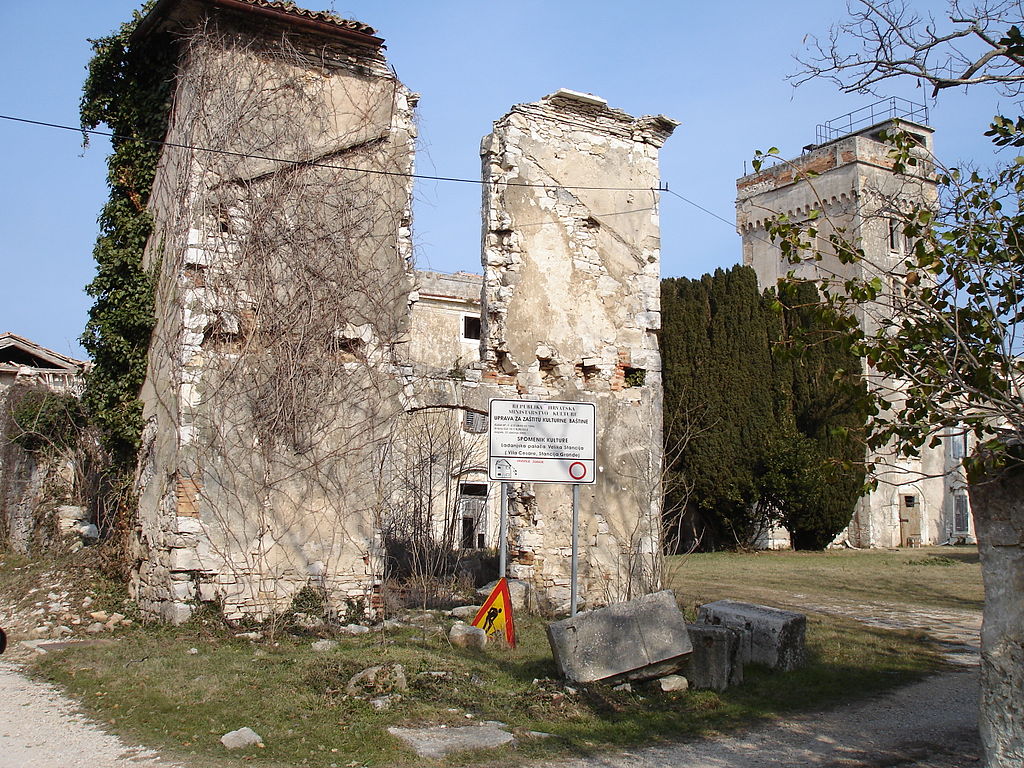
The gorgeous estate is finally about to have its original grandeur restored owing to the new development project.
‘Stancija Grande was built in the 19th century as the estate of the Fabris family, the counts of Begliano from Friuli. At the end of the 19th century, it was sold to landowner Alfredo Cesare and his family, who restored it at the turn of the 20th century, hence its other popular name Villa Cesare. It’s interesting that the Cesare family was an initiator of tourism in these parts in the early 20th century, having owned two villas, Villa Lotte near Stara Savudrija and Villa Ziani near Valfontana, with the latter built exclusively for tourism purposes. With our project, we will essentially give the ruined building of Stancija Grande its historical splendour back, but in a new tourist edition, with respect to the continuity of tourism development in these parts’, said Marfan.
The architectural integrity of the building, as well as its layout, will be preserved according to strict conservation regulations, with the estate seamlessly integrated into the landscape as whole.
According to Marfan, negotiations have been started with the Four Seasons to manage the new luxury property. The hotel chain was reported to be breaking into the Croatian market on several occasions, but hasn’t as of yet, so the investors now hope to win them over with their project in Istria.
A new golf course, envisioned as one of the most beautiful golf courses in Europe, will be built in the area between Stancija Grande and the new hotel, some two kilometres from the coastline. Marfan pointed out that this is primarily a greenfield project that is very environmentally friendly, as reported by Glas Istre in a more detailed feature.
‘The entire project is being developed based on the principles of sustainable development and using state-of-the-art technology. Where golf courses are considered, this includes desalination of sea water for the purposes of course maintenance, use of solar energy for production of electricity, and installation of glass facades with integrated devices for storage and conversion of solar energy. We also plan to have water-purifying toilets installed wherever possible, with the goal of saving water’, said Marfan.
The golf course was designed by Diethard Fahrenleitner from St. Johann in Tirol, the architect who previously designed the golf course in the aforementioned Kempinski complex in Istria. It’s set to be quite a scenic location; the coastline is nearby, and the investors are planning to plant olive groves and vineyards throughout the course as a nod to the estate’s history: Stancija Grande used to be a combination of a residential estate used by the owner and his guests, and an agricultural estate that employed the local population.
Last autumn, Miro Oblak sold the project managed by the Pelagius company to Konrad Ackermann from Switzerland. Marfan explained that Croatia has become a very attractive holiday destination to Switzerland over the last two years, and as such interesting to Swiss investors. Istria holds the top spot due to its geostrategic position, i.e. proximity, but also for its hospitality and natural beauty which justify the confidence of the growing number of guests who are choosing the Istrian peninsula as their holiday destination.
It has also won over Ackermann who decided on this business partnership. 'In addition to their own capital, they will also be investing credit funds as they cooperate with the two largest Swiss banks UBS and Credit Suisse. The directors of these banks have already visited us and are satisfied with the plans we presented’, said Marfan, adding the company absolutely believes in their vision for the new elite resort in Savudrija.
Petram Resort and Residences: Largest Croatian Tourism Complex in the Works
July 13, 2021 - The largest tourism project currently being built in Croatia, Petram Resort and Residences, is located at the northernmost point of the Croatian coast, on the border with Slovenia and Italy, at the Alberi location in Savudrija in northwestern Istria.
However, this is also a huge real estate project, reports Jutarnji List.
The complex will have 252 luxury properties - 55 tourist villas, an aparthotel with 179 holiday apartments, and 18 residential apartments. According to the announcements, everything is conceived on top design ahead of trends, sustainable construction, new materials, fragrant Mediterranean horticulture, and open views, combined with an innovative concept of resort maintenance and real estate management. It is the first resort for housing and vacation of its kind in Croatia and the region.
"It will be possible to leave the care of the property completely to the resort and thus ensure a carefree vacation, but also to improve and return the investment. It will be a ubiquitous, almost invisible service worthy of a five-star hotel," announced investors MK Group and Aleksandar Group.
This resort will offer a closed community holiday with all amenities and services at your fingertips and concierge service 24 hours a day. It will offer a combination of sea, greenery, thoughtful and top design, sports facilities, and wellness. In addition, it will have a striking infinity rooftop pool, garden pools, swimming pool, children's park, and restaurants.

3D MODUS
Surrounded by the sea as far as the eye can see, Petram Resort & Residences will be an ideal location for hedonists. The big advantage is good connections, as it is close to several airports and a few hours drive from many cities.
"We are talking to LAD 1 studio architects Lotus Group Maja Bručić and Eva Cotman. We were interested in the contents of the resort because a large infinity pool on the roof is mentioned as an attraction. It will be the largest and most beautiful outdoor roof pool you can imagine, 105 meters long, the second-longest in the world, on which our top statisticians worked," says Maja Bručić.
There will also be a fine-dining restaurant on the roof of the aparthotel. The garden pool is located next to a modern Italian restaurant on one side and a steak house with Istrian specialties. There is also a swimming pool surrounded by Mediterranean scents created for lazy mornings, active days, and afternoons full of sun and relaxation, an outdoor swimming pool and children's park, swimming pools with facilities for children, and golf courses nearby.
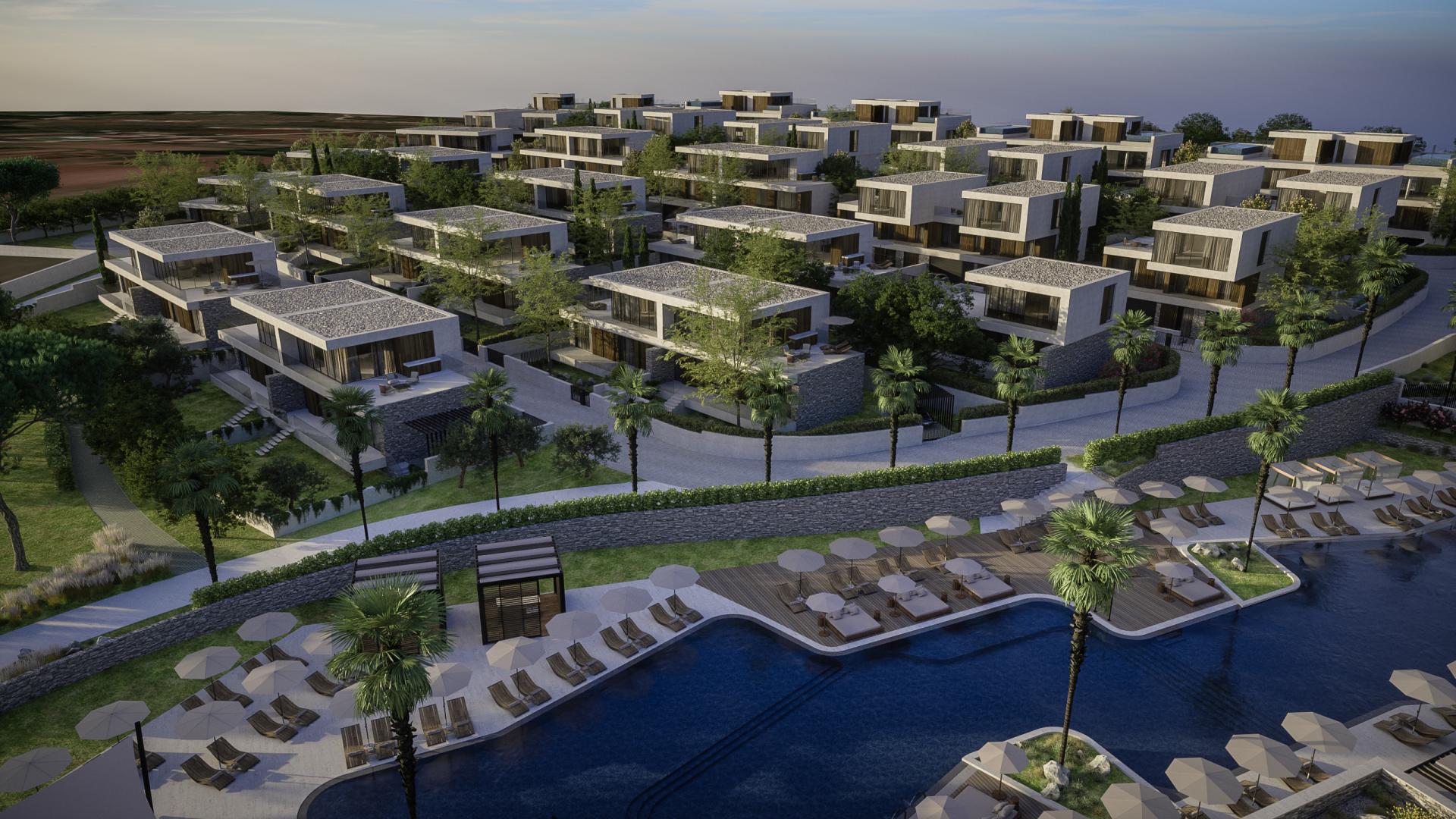
3D MODUS
"The resort will have 55 tourist villas, 12 of which with their own infinity roof pools and another 43 modern villas perfectly blended into the Mediterranean climate in which they are located. High construction standards will allow immersion in a beautiful environment and ensure privacy, luxury, and peace. The buyer of the villa chooses one of the three types of decoration, the one that best suits their sensibility," explains the architect Bručić.
In addition to villas, there are 18 apartments in apartment buildings and 179 tourist apartments in the main building, the apart-hotel, ranging from studios to three-bedroom.
"Flats and apartments will be modern, with open views and the right dose of luxury and privacy, which will allow undisturbed enjoyment of all occasions. Each property will choose an interior design package that suits the style and sensibility of future owners. It will also be possible to choose a maintenance package," explains Eva Cotman.
Apart from the fact that the architects were committed to using top local materials that are in harmony with the climate and originate from it, they also paid attention to horticultural landscaping that is indigenous, lush, and full of colors.
"We strived to achieve the ideal combination of respect for Mediterranean construction and horticulture while leaving a sufficiently open view of the sea and the environment that surrounds us, which reflects our commitment to sustainable construction. The whole complex is energy class A+, with quality thermal insulation and renewable energy sources. The heating and cooling and hot water preparation system are designed with cranes that use energy from renewable sources and thus significantly increase energy savings and reduce the harmful impact on the environment, especially air and water," says Maja Bručić and adds that they pay attention to sorting and separate waste collection and use waste air recovery.
Schuco brand windows and doors are made of aluminum frames with an interrupted thermal bridge, with double-glazed insulating glass, which is also low-energy and has a thermoreflex coating. This allows the residences to have large glass surfaces with open views without affecting the increased energy consumption.
The investor, Čista voda project, is an Istrian company, and the Petram Resort and Residences project is implemented in cooperation with well-known investors MK Group and Aleksandar Group. MK Group is one of the leading holding companies in agriculture, tourism, and banking in Southeast Europe. In its more than 25 years of operation on the Serbian market, Aleksandar Group has built hundreds of thousands of square meters of residential and commercial space. LAD 1 studio is in charge of designing, supervising, and managing the project, and the Lotus Group is the brand of that company.
For more on travel in Croatia, follow TCN's dedicated page.
Slaven Škrobot will Cycle From Savudrija to Prevlaka and Needs Your Help!
May 12, 2021 - After jumping into the sea 12 years ago, Slaven Škrobot was paralyzed. Despite that, he is inspiring people by traveling and adventuring the world.
After jumping into the sea 12 years ago, Slaven Škrobot remained immobile, but this young adventurer and travel lover decided to live life to the fullest and travel the world despite tetraplegia. To break down prejudices, educate people about life with disabilities and inspire them to dare to follow and live their dreams, a few years ago he decided to write a blog, and Telegram once wrote extensively about his travels.
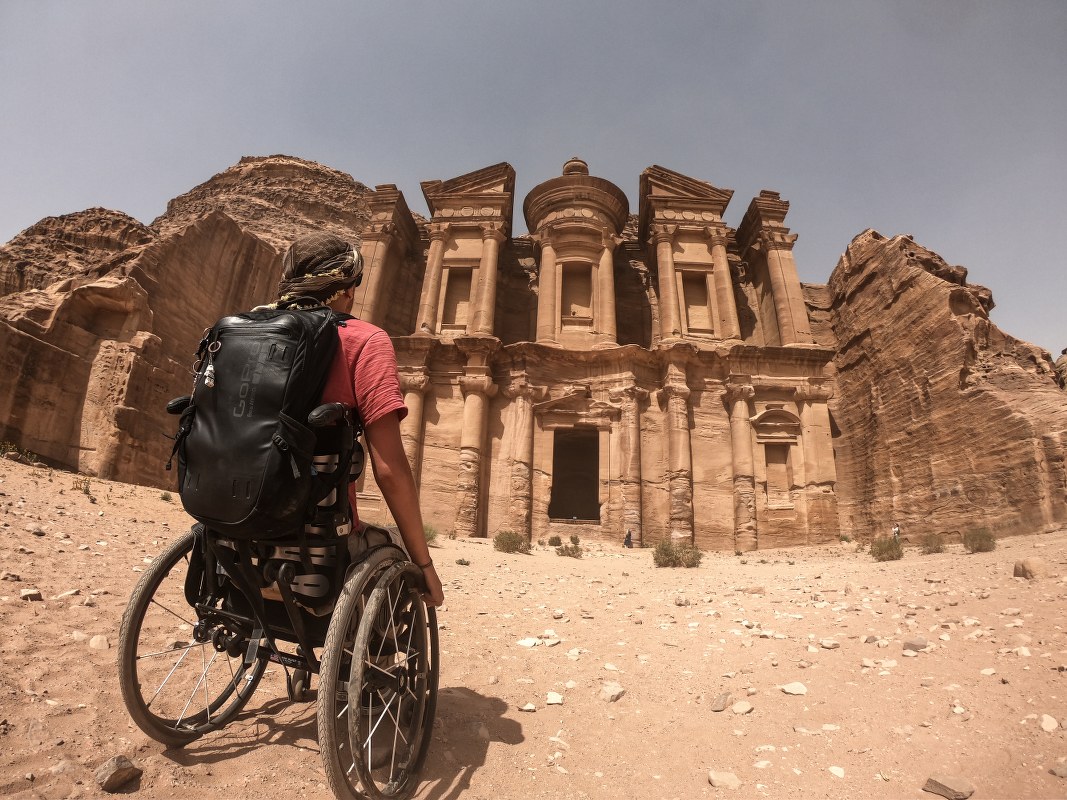
In short, in the last three years, he has visited four continents and become the first person in the world to climb in a wheelchair to the Monastery in the Jordanian city of Petra and to the top of Pidurangala, the sacred rock in Sri Lanka and was named ‘‘Traveller of the year 2019/2020’’.
Slaven's 1000 km wheelchair with smiles on their faces
As Telegram.hr reports, Slaven has forged a new plan which he cannot realize without additional help, so he has decided to launch a crowdfunding campaign through which he invites all people of goodwill to become part of his feat, a humanitarian action called "Slaven's 1000 km wheelchair with smiles on their faces", through which he wants to raise money to buy a bicycle for someone who, just like him, is a person with a disability.
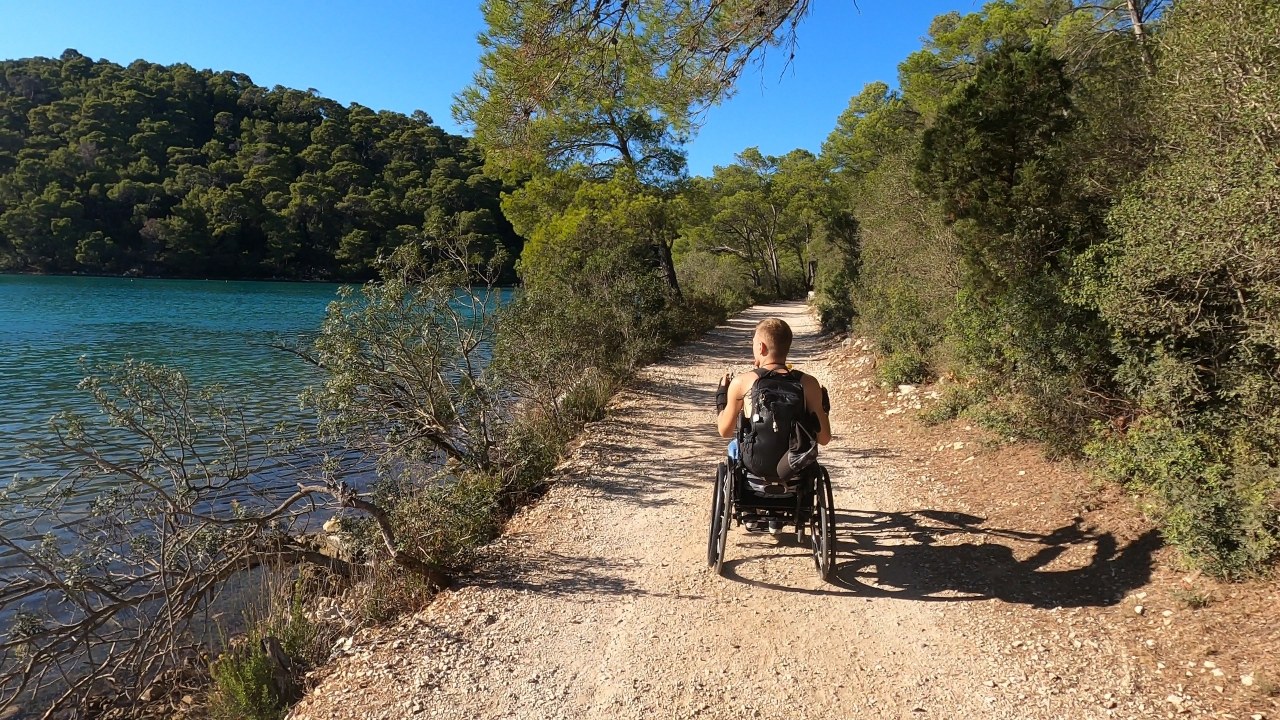
"On August 15, I decided to set off with my specially adapted bicycle on the road from Savudrija to Prevlaka, during which I will cover 1,000 kilometers. With this venture, I want to motivate and inspire people, put an emphasis on an active life and promote Croatia. But the most important thing is that this action is of a humanitarian character and during my 40-day trip I will raise funds to buy at least one person with a disability a specially adapted bicycle as I have”, Slaven told Telegram, adding that people in a similar situation he wants to show by personal example that a good life after such an accident is very possible.
The reason behind the challenge
Just last year, Slaven Škrobot says, thanks to donations from his faithful companions, he was given the opportunity to purchase a specially adapted, hand-held bicycle. ‘‘I could’ve never afforded it since such a bike costs 60,000 kuna. That bike changed my life, it gave me a new dimension of travel, independence, and freedom. With that bike I traveled and explored our coast and cycled through Krk, Vis, Mljet, and Dugi Otok’’, adds the unstoppable Slaven who now wants to give this feeling of freedom to someone who has a similar disability as him.
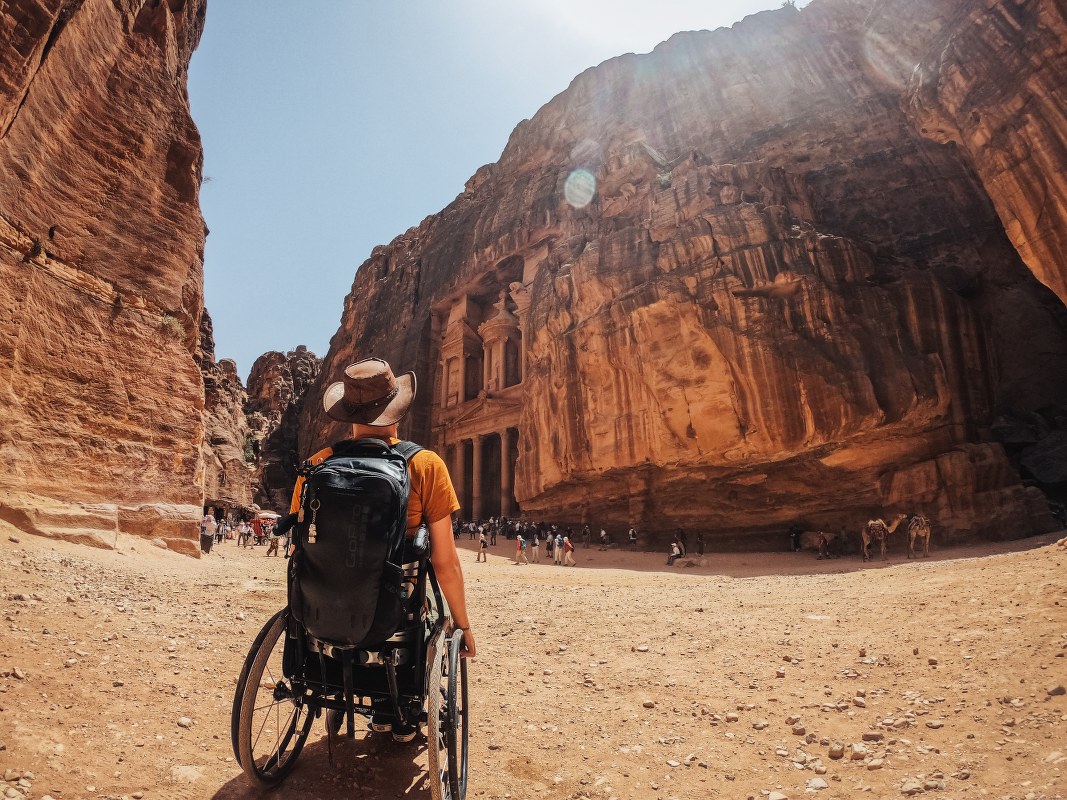
‘‘While it all sounds very simple, the reality is quite different’’, he says. “Cycling 1,000 kilometers for someone like me is no small thing. Using hands that are not fully functional (I have no function in my fingers, triceps, and right wrist) is a big challenge and something like that, as far as I know, no one has done so far. In other words, as a person with tetraplegia and semi-functional hands, I can rarely improvise, be spontaneous or travel alone, because I am completely dependent on someone else's help’’.
Slaven will also need a team
"For a project like this, I need a good team, a very good plan, and quality logistics. In order for the project to start at all, it is necessary to cover the costs of the trip, which unfortunately are not small and for which I personally do not have the funds. It would be ideal to have a camper for rest, spontaneity, and freedom. The rent of a camper for the period in question is around HRK 35,000.00. In addition to campers, it is desirable for people who go with me to pay for their efforts”, he said.
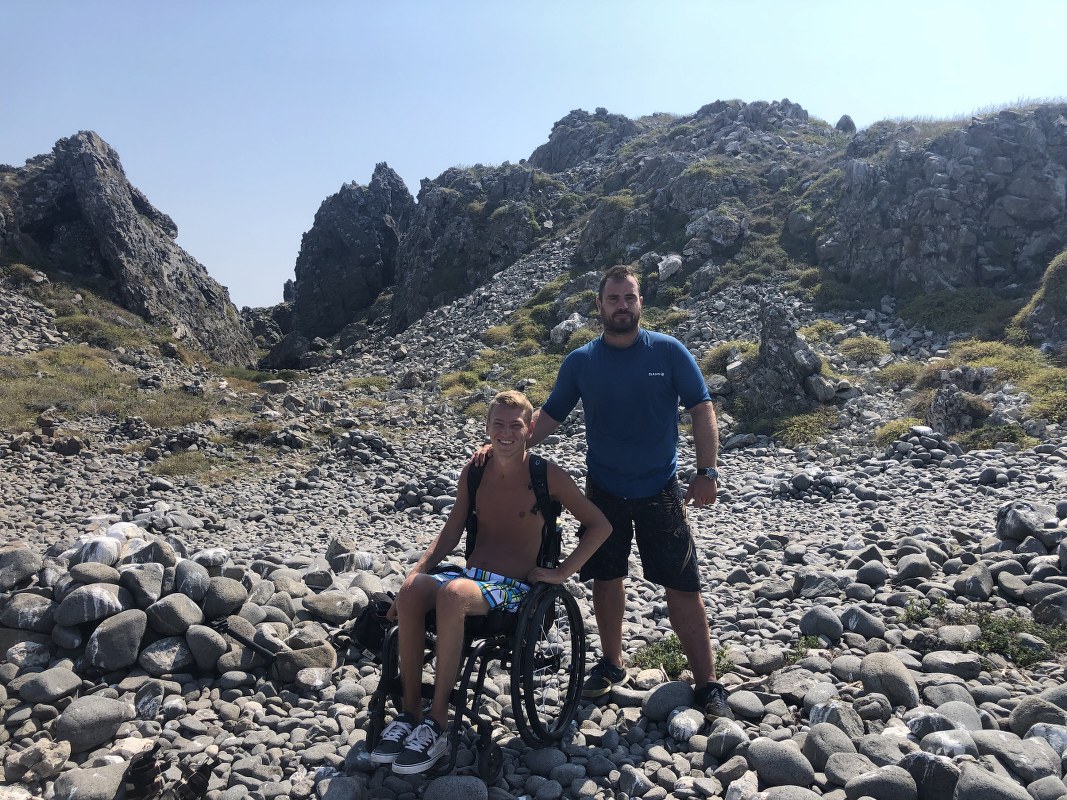
However, these are not all costs, and you also have to pay for food, fuel, and additional battery, and other expenses such as food supplements, spare tires, tools, equipment, tolls, and camp costs. Namely, at least two people will go with Slaven, and he also needs an escort on a bicycle, a driver, a photographer or a cameraman, and a physiotherapist. "But I believe that I can find all these characteristics in only three people, which in the end would make a total team of four people", this young adventurer is convinced.
A documentary on the way
If you are wondering why the cameraman, Slaven Škrobot, has the answer to that as well. ‘‘The idea is to make a documentary out of the whole project, in which we would finally thank everyone who was part of this story, donated, and helped achieve the goal. I will consider it a small but heartfelt thank you. Something I can offer in return’’.
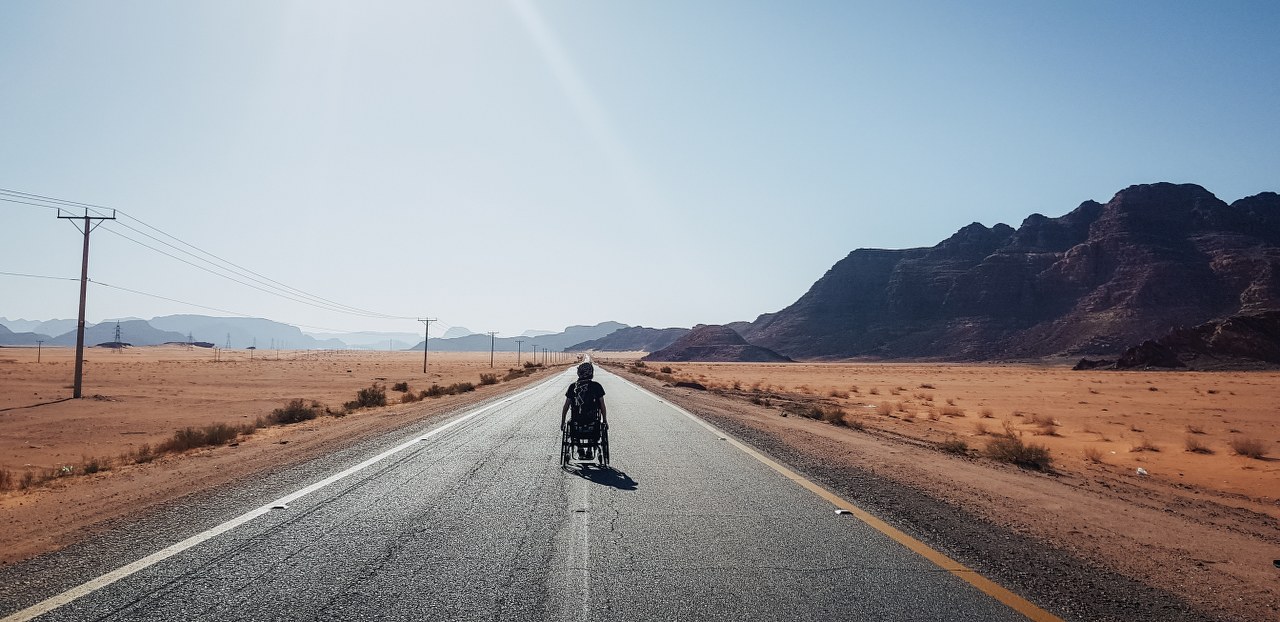
When the line is drawn, he adds, he will need 91,000.00 kuna for the realization of this project. “I am aware that this amount will seem large to some, but it is a realistic cost situation necessary for the project to succeed. Although this amount is large, the goal of the project is to raise a significantly higher amount needed to purchase a bicycle for people with disabilities. In addition, if it will encourage, motivate and make a person happy and give them that feeling of independence and freedom like mine, then it is invaluable. Therefore, help me so that together we can help someone else and make life better’’, he concludes.
You can learn more about Slaven Škrobot past, present, and future adventures on his official website.
For more, follow our lifestyle section.
200 Years of Croatian Lighthouses Exhibited in Biograd na Moru
January 10, 2021 – After the initial opening in Umag in 2018, on the 200th anniversary of the lighthouse services on the Croatian coast, the exhibition "More than light and salt – 200 years of Croatian lighthouses" will open in Biograd na Moru.
The exhibition opens on January 12, 2021, at the Homeland Museum Biograd na Moru, regarding Saint Anastasia's feast and a city day. It was also organized regarding the 200th anniversary of the lighthouse service on the Croatian coast, which officially began with the commissioning of a dedicated facility in Savudrija in 1818.
Today, the lighthouse in Savudrija is a protected cultural asset. After two centuries, it testifies to the rich Croatian maritime tradition and the challenges of being a lighthouse keeper, a very rare profession.
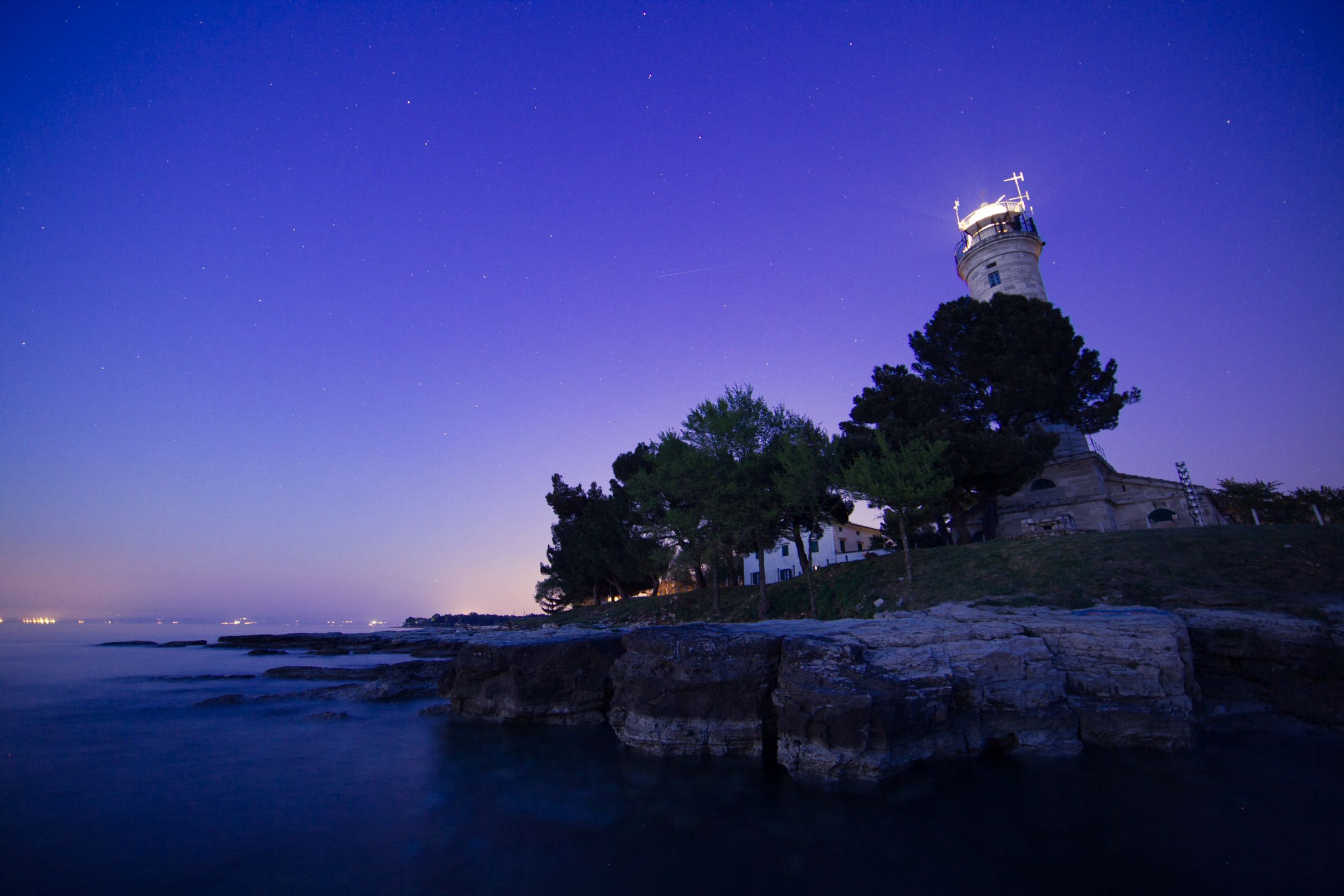
Savudrija Lighthouse / Copyright Romulić and Stojčić
To mark this significant anniversary, the exhibition was organized in April 2018 in the Umag City Museum, showing objects from the history of the lighthouse service, documentaries, marine lighting technology, and photographs from private collections.
After the initial opening in Umag, in partnership with the Croatian Maritime Museum Split and the Maritime Waterways Institution Plovput d.o.o., the exhibition was organized in numerous museums along the Adriatic coast – Rijeka, Zadar, Dubrovnik, Split. The last exhibition was held in February 2020 at the Technical Museum Nikola Tesla in Zagreb.
Visitors have the opportunity to see Croatian lighthouses from the period of the countries that once ruled the eastern coast of the Adriatic Sea. For example, the Austro-Hungarian postcards from the collection of the prominent collector, the late Luka Dragičević, and photographs from the extraordinary little-known album of the Croatian Hydrographic Institute.

Lighthouse Veli Rat, Dugi otok / Copyright Romulić and Stojčić
The exhibition touches on questions about how lighthouses' construction changed the locations where they were built and how the lighthouses themselves changed through wars, modernization of technology, and man's abandonment due to automation.
In addition to exhibits that testify to the long list of duties of today's extremely rare profession of lighthouse keepers, a documentary material is presented that provides valuable information about lighthouse keepers' activities throughout the last century: living and working in almost unimaginable conditions.
The significance of this vocation in the 21st century is thematized on the example of today's Savudrija lighthouse keeper Mario Milin Ungar, who is the fifth generation of lighthouse keepers in his family.
The exhibition dedicated to Croatian lighthouses will be open until February 28, 2021, and the opening event will be held in compliance with prescribed epidemiological measures.
Source: Biograd na Moru
To read more about lifestyle in Croatia, follow TCN's dedicated page.
Savudrija: 600 Million Kuna Investment for Istrian Resort
As Novac/Barbara Ban writes on the 15th of November, 2020, while most investors in the Croatian tourism sector have put the brakes on a bit due to the ongoing coronavirus pandemic and the levels of uncertainty surrounding the development of the situation regarding public health and, consequently, the economic crisis, a new Istrian resort with a hotel worth about 80 million euros is emerging in Savudrija.
This new Istrian resort's construction began back in mid-October. The company Cista voda projekt (Clear water project) from Savudrija is formally investing in the project, and the co-investor is Vojislav Gajic, who is the head of the company that deals with the construction and sale of real estate in Novi Sad called Aleksandar Gradnja. His company has been known for the construction of residential and business premises over on the Serbian market for more than 25 years now. Vojislav Gajić says that this new Istrian resort will be ready for the 2022 tourist season.
''This is an investment of about 80 million euros, and we managed to solve deal with all of the documentation with building permits in just 10 months, without any problems. We completely changed the project that was supposed to be realised there. Regardless of the overall situation with the pandemic, we haven't been having any problems with our investments, including this one in Savudrija. All aspects of possible problems on the market have been taken into account and the investment has been covered,'' Gajic explained in a telephone conversation.
The land on which the project financed with Serbian capital will be realised, was bought at a public auction two years ago, and was sold in the bankruptcy process of Vila Savudrija at a starting price of one kuna. Cista voda projekt bought the land for 17.2 million kuna.
This is construction land that was owned by the Slovenian company Imos Holding from Ljubljana, which went bankrupt, and its biggest creditors are Nova ljubljanska banka, the Croatian Ministry of Finance and HEP. A large tourist project, Hotel & Resort Villa Savudrija, was planned on the land back in 2010. It would have consisted of as many as two five-star hotels with numerous villas with a total of 400 rooms, a casino, villas with swimming pools, a shopping area, swimming pools and more. Everything failed because the company, whose founder was the Slovenian builder Milan Kepic, ended up in bankruptcy after not being able to find an investor to invest for this project, which was eventually completely changed.
When the land was purchased, the public speculated that the Serbian ''king of sugar'', Miodrag Kostic, who owns real estate in the immediate vicinity, was behind everything. This regards the Kempinski Hotel and the Skiper Residence, as well as the local golf course managed by the MK Group company, owned by Kostic. He bought the Kempinski Hotel and the airport in nearby Portoroz.
When the land was purchased, the public was informed that behind the company stood the formal owner who is the founder of Vinemont Ventures, which is, in turn, registered in the British Virgin Islands. She owned companies that connected with Kostic himself, the media then wrote.
According to the court register, Cista voda projekt was divided and a new company, Beater Limited, was formed, which became the founder of the company that formally manages the project. When asked if Kostic is a partner in the project, the company denied it.
According to this project, an apart-hotel with 179 accommodation units, 55 luxury villas and three residential buildings with 18 apartments will be built on the land. In total, the new Istrian resort will have just under a thousand beds.
For the latest travel info, bookmark our main travel info article, which is updated daily.
Read the Croatian Travel Update in your language - now available in 24 languages
Croatian And Slovenian Divers Joined Forces To Remove Underwater Waste In Savudrija Bay
ZAGREB, Sept 6, 2020 - Croatian and Slovenian divers joined forces on Sunday as part of an environmental drive called "Cleaning Without Borders" to remove underwater waste in Savudrija Bay, the subject of a long-running border dispute between the two neighboring countries.
Over 150 divers from throughout Croatia and about 30 of their colleagues from Slovenia took part in the clean-up, removing dozens of bags of solid waste on both sides of the bay - in Piran, Savudrija, Veli Joze campsite, and Kempinski beach.
About 20 children participating in the 5th International Children's Diving Eco-Patrol also made their contribution.
"Drives like this are praiseworthy and that's the direction we should all be going for the environment," said the Minister of Economy and Sustainable Development, Tomislav Coric.
The main objective of the drive was to clear the sea bed of waste as well as to draw attention to the global problem of sea pollution and raise public awareness of the importance of preserving the flora and fauna of the Adriatic Sea, Andreja Vedrina said on behalf of the organizers, Promocija Ronjenja.
"Projects like this contribute to the good neighborly relations which Croatia and Slovenia have fostered for many years, while the clean-up drive itself contributes to the preservation of the underwater world of the Adriatic Sea," Slovenian Environment Minister Andrej Vizjak said in a video message.
For the latest travel info, bookmark our main travel info article, which is updated daily.
Read the Croatian Travel Update in your language - now available in 24 languages
VIDEO: MK Group to Invest 5 Million Euros in "Skipper Resort" in Savudrija
As Glas Istre writes on the 22nd of October, 2019, since back in 2017, MK Group has owned the Skipper Resort in Savudrija, Istria, a complex covering over 200,000 square metres in total.
The complex includes Kempinski Hotel Adriatic, as many as 21 luxury villas, golf courses and apartments. With this year's investments of over three million euros in Kempinski Hotel Adriatic in Croatia and the announced new investments of two million euros over the next year, MK Group confirms their clear intention to develop the tourist destinations in which it operates and showcases their desire to make them a favourite among regional and European tourists.
It is no secret that Istria offers great potential for tourism development. In this part of the region, MK Group wants to be a fully active partner in the development of not only hotel deals but entire destinations, and wants to make their projects in Istria become favourite tourist destinations.
''That's why we started this investment process,'' said Kai Behrens, General Manager of Kempinski Hotel Adriatic in Savudrija, Istria.
Mr. Behrens also said that more than three million euros had been invested in total in the renovation of the hotel in the past, and that the major works were the renovation of the hotel beach, The Skipper residence, the VIP beach and the restaurant.
"In the coming period, we expect additional investments of two million euros in the Skipper Resort villas, as well as the furnishing and refurbishing of certain apartments. We're meeting the trends and demands of modern tourism and I wanted to make this part of the Adriatic the first choice, not only for guests from the region, but also for those from other European countries and from further afield,'' added Kai Behrens.
It's worth mentioning that the majority-and-minority-owned MK Group owns fourteen hotels in Serbia, Slovenia, Croatia and Montenegro, the Portorož Airport and a golf course in Savudrija. Particularly important for the development of the tourism sector within MK Group is the collaboration with renowned global brands such as Kempinski and Sheraton.
If you're able to understand Croatian, watch the video below:
Make sure to follow our dedicated travel and business pages for more on investment in tourism in Croatia.
Kids and Divers from Croatia and Slovenia to Clean Savudrija Bay's Seabed
As Andrea Vedrina/Morski writes on the 4th of June, 2019, more than two hundred divers from Croatia and Slovenia will be included in the ecological action ''Clean-up without borders'', in which they will work to clean the seabed of Savudrija bay on Sunday, June the 9th.
The divers will clear both sides of the bay, both the Slovenian and the Croatian side. The divers will remove large scraps in front of Piran and in Savudrija near Veli Jože camp and in the harbour.
The children will provide a valuable contribution to this action in Savudrija. Under the guidance of their diving instructor, participants from The International Children's Diving Eco Patrol will help purge the sea along the coast of Veli Jože camp and learn about building a better relationship with the sea in the future.
The main goal of the action, along with the obvious cleaning of the area's seabed, is to raise awareness of the importance of conservation of the plant and animal world in the Adriatic sea. In order to do this, it is necessary to connect citizens of all generations and neighbouring countries, and since environmental concerns know no boundaries, divers from more than thirty clubs and associations from neighbouring Bosnia and Herzegovina will also take part along with Croatian and Slovene divers.
The event is organised with the support of no less than Electrolux, which donated part of the money made from vacuum cleaner sales during the spring to cleaning Savudrija bay's seabed.
The co-organisers are the HRVI Nemo-Adriatic diving club, PGD Piran, Zagreb Holding and its subsidiary Vladimir Nazor.
The ''Clean-up without borders'' action, along with the help of the International Children's Diving Eco Patrol is held under the auspices of President of the Republic of Croatia Kolinda Grabar-Kitarović and President of the Republic of Slovenia Borut Pahor, as well as the Ministry of Environmental Protection and Energy, the Ministry of Demography, Family, Youth and Social Policy, the Environmental Protection and Energy Fund, the City of Umag, and the City of Piran.
Make sure to follow our dedicated lifestyle page for much more. If you're interested in how Croatia takes care of its environment, give Total Eco Croatia a follow.


